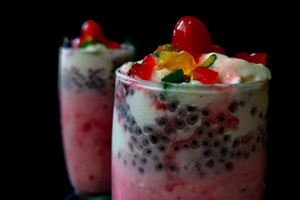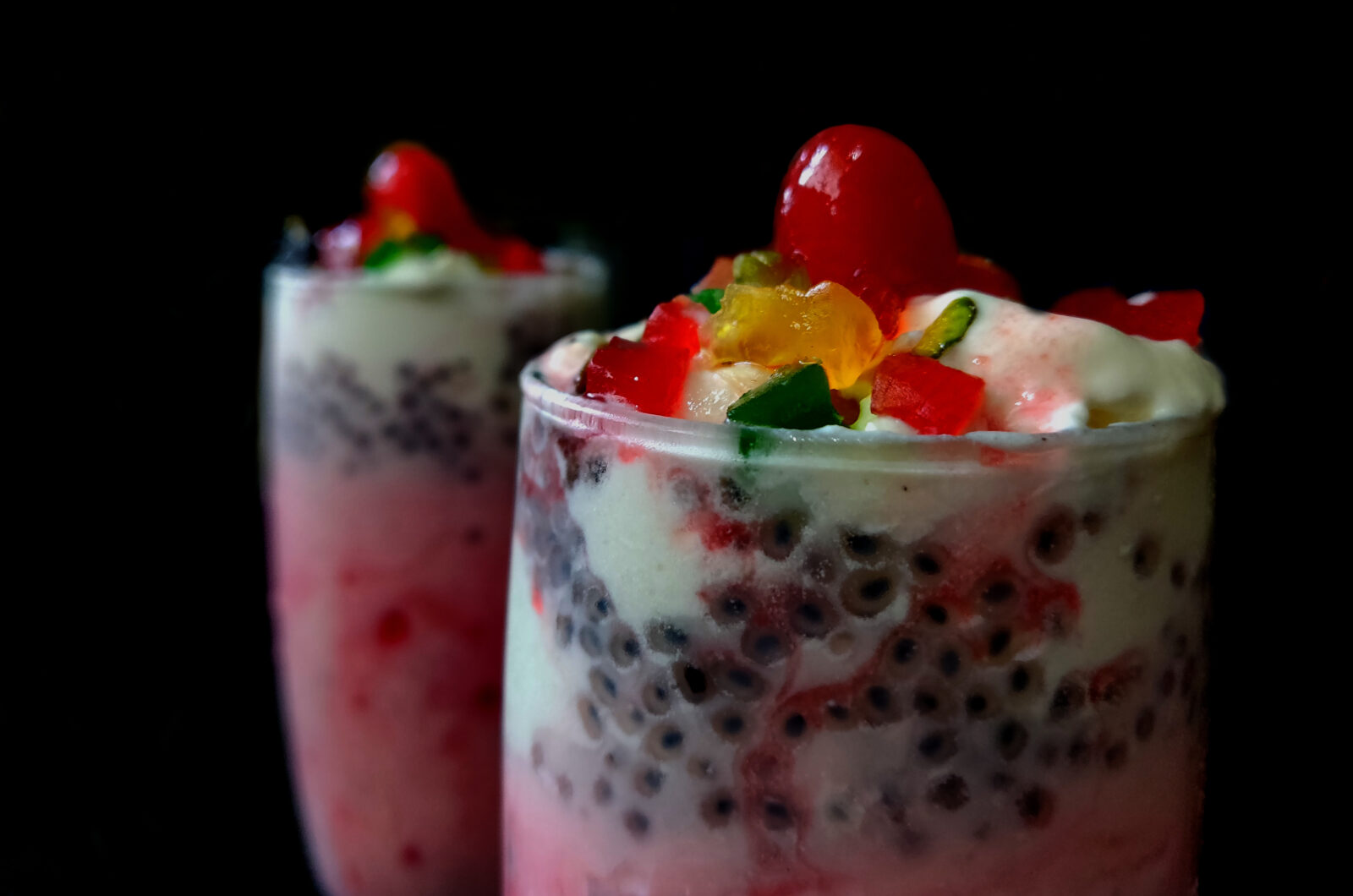Falooda
Recipe by Admin
Course: DrinksCuisine: Afghan, Bengali, Burmese, Indian, Iranian, Pakistani, Sri LankanDifficulty: Easy
Servings
1
servingsPrep time
20
minutesCooking timeminutes
Calorieskcal
Cook Mode
Keeps the screen of your device on.
Ingredients
0.25 cup falooda sev (thin vermicelli-like noodles made from corn starch)
2 tbsp basil seeds (sabja seeds or tukmaria)
2 cups milk (full-fat or whole milk preferred)
2~3 tbsp sugar (to taste)
1~2 tbsp rose syrup (or to taste)
0.25 cup agar-agar or jelly (optional, for added texture)
Ice cream (typically vanilla or rose flavor)
Directions
- Prepare Basil Seeds
Soak the basil seeds in water for about 30 minutes until they swell and become gelatinous. Drain and set aside. - Cook Falooda Sev
Boil water in a pot and add the falooda sev. Cook according to the package instructions (usually about 2-3 minutes). Once cooked, drain and rinse with cold water. Set aside. - Prepare the Milk Mixture
In a saucepan, heat the milk until it’s warm. Add sugar and stir until dissolved. Remove from heat and let it cool. You can also chill it in the refrigerator for a while. - Assemble the Falooda
In a tall glass, layer the ingredients: Start with a layer of falooda sev.
Add a layer of soaked basil seeds.
Pour in some of the sweetened milk.
Add a layer of agar-agar or jelly if using.
Drizzle with rose syrup.
Repeat the layers as desired. - Top with Ice Cream
Finish off with a generous scoop of ice cream on top. - Serve
Serve immediately with a long spoon or a straw. You can drizzle extra rose syrup on top for added sweetness.
Notes
- The origin of falooda goes back to Iran (Persia), where a similar dessert, faloodeh, is still popular. The dessert came to late Medieval India with the many Central Asian dynasties that invaded and settled in South Asia in the 16th to 18th century. The present form of falooda was developed in the Mughal Empire and spread with its conquests. The Persianate rulers who succeeded from the Mughals patronized the dessert with their own adaptations, specifically in Hyderabad Deccan and the Carnatic areas of present-day India. This beverage is now a part of Pakistani cuisine, Afghan cuisine, Burmese cuisine, Indian cuisine, Bangladeshi cuisine and Sri Lankan cuisine and is served on weddings and other occasions. In Sri Lanka, Falooda (ෆලුඩා / ஃபலூடா) is often consumed as a popular dairy refreshment. (Source: Wikipedia)
Have you tried this recipe?
Tag @recipe.info on Instagram and hashtag it with #recipe.info

